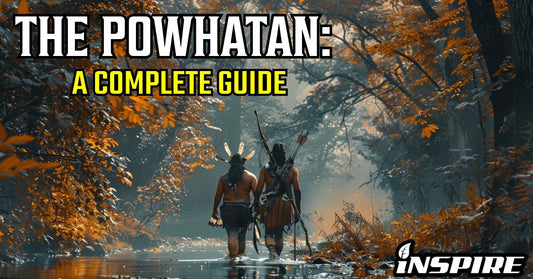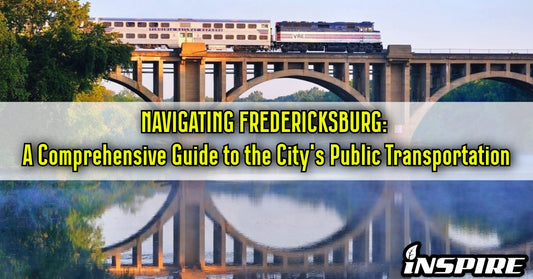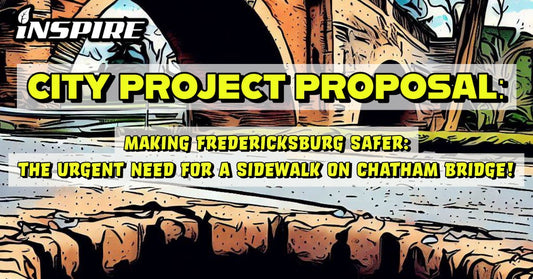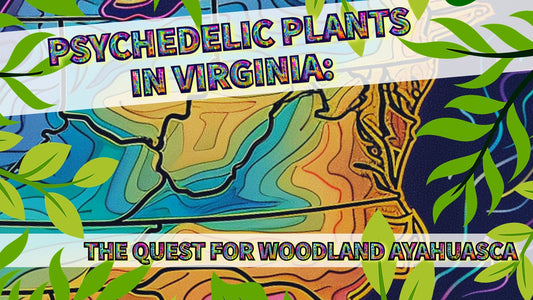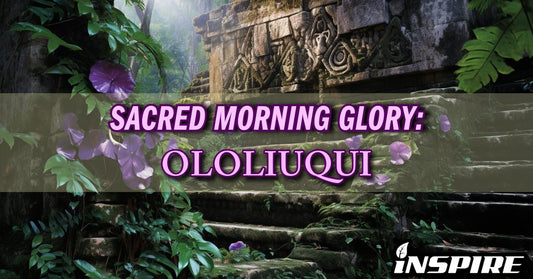Written By: Zach Champ,
Connect with me on Instagram!

(Originally published at WASHINGTON DIGITAL MEDIA on January 30, 2020)
![]()
WHAT IS VISUAL STORYTELLING?
Storytelling, both visual and oral, is part of the human experience and tradition and unites us across all cultures.
As far as we are aware, humans are the only beings on this planet capable of telling stories through images, symbols, and communicated language.
The art form of visual storytelling maintains a rich history and tradition dating back to humanity’s earliest origins.

The first forms of visual storytelling were pictographic cave paintings and etchings, the most famous perhaps being those found in Lascaux, France, and other locations around the world, including Africa, Australia, and the American Southwest.
The first working camera was invented in 1816 by the French inventor Joseph Nicephore Niepce.
Using his homemade camera, Niepce would be the first person to take a photograph using a specially treated paper covered with silver chloride.

Niepce would continue to work on his project in collaboration with French inventor Louis Daguerre until his death at the age of 68.
Louis Daguerre continued Niepce’s work and is highly regarded for his significant contributions to the art of photography with the invention of the Daguerreotype process in 1839. The Daguerreotype was one of the first forms of photography that became available to the public.
The Daguerreotype was slightly different from the photographs we recognize today. This earlier predecessor to the modern photo was fragile, difficult to duplicate and make copies of, and required toxic chemicals during the photo-developing process.
Photography wouldn’t become truly widespread until the first commercial camera was invented and released by George Eastman in 1888 and sold to the public as “The Kodak” camera.

The key to Eastman’s invention was the discovery of how to create a celluloid based film, which he could use to retain images by absorbing light for long periods of time.
Other famous early pioneers of cinema and film included Thomas Edison with his invention of the Kinetograph, as well as the French Lumiere Brothers who are credited with filming and producing the first movies.
A movie is typically any length of film consisting of a series of individual frames. When each frame of the film is projected and played in successive order, an optical illusion is created that resembles a continuously moving picture- hence the name “motion picture”.
The oldest surviving film currently available is the short-film Roundhay Garden Scene from 1888.
The first movie theater, The Nickelodeon, would open in Pittsburgh Pennsylvania in 1905.
Shortly thereafter, cinema and film would blast into mainstream culture, and it wasn’t long before nearly every major city in America had a movie theater.

Today movies are popularized by the dominance of Hollywood and the film-making industry.
American movies are beloved around the world including the latest blockbuster hits, introducing foreign audiences to characters and stories well-known to Americans.
Other countries are now becoming hubs for their own domestic film and entertainment industries with the rise of ‘Bollywood’ and Asian cinema.
Throughout history, visual storytelling has been an essential tool for bringing people together through the power of entertainment. In addition, visual storytelling can be instrumental in creating social and political change.
![]()
WHY VISUAL STORYTELLING MATTERS:
![]()
Influencing Culture & Society
Film is among the greatest forms of art humans have ever created. Film and cinema’s ability to captivate and enchant has long been appreciated by society and has helped it maintain a prized position as a medium of influential change in culture.
As a result, film and media have been used for both positive and negative purposes throughout modern history. Some of the worst uses of film and media can include obscene or pornographic material.
A film that is used to manipulate or deceive for political and personal purposes is known as propaganda.
During World-War II, Nazi Germany under Hitler’s direction used propaganda to help the Third Reich gain political and social culture not just in Germany but throughout Europe.

The hallmark film of this period was the key Nazi propaganda piece from 1935, The Triumph of the Will which is still referenced to this day for it’s militaristic and nationalistic symbolism and imagery.
While these are examples of how film and digital media can be used to negative effect, we shouldn’t underplay the impact that film can have to inspire and educate!
One of the ways that film can achieve political and societal change through the power of visual storytelling is with the documentary genre. Documentaries are films that are meant to provide a factual account or depiction of historical events or current topics.
A good example of a documentary that has changed society is Al Gore’s An Inconvenient Truth, which helped increase the public’s awareness about the threats of climate change.

Other famous documentaries include Blackfish, Restrepo, Samsara, Super Size Me, Thin Blue Line, and many more!
Even if you haven’t seen these documentaries yourself, you likely have heard about them, which goes to show the impact that the documentary can have in influencing and creating public discussion of important topics.
You surely have heard the phrase that “A picture is worth a thousand words”
… Just think about how valuable the power of film is!
When we are watching a great film, we can easily be caught up in the emotions of the character’s drama. Films engage our empathetic sensibilities and allow us to consider radically different perspectives and points of view.
People watch films to escape and to fantasize about other’s lives.
Internet and technology have created a new global platform for people to share their stories.

The widespread use of smartphones with cameras that have features like live-streaming, 360 photographs and video, alternate reality, and so on has allowed anyone to become a visual story-teller!
![]()
STORY-BOARDING
Storyboards are useful when creating films. A film’s storyboard is comparable to a building’s blueprint- it’s a visual diagram that helps directors, cameraman, and actors determine what type of camera and production work will be required to complete a project.
A storyboard resembles a comic book- it consists of a series of panels of sequential art that are used to portray the film’s narrative. Storyboards help demonstrate what you are visually trying to achieve in your film.

Storyboards allow writers and directors the ability to transmit their vision and show their crew how they want the story to be told. Scriptwriters and directors should always include storyboards, especially if they are not filming the movie themselves and are relying on another cameraman to film.
A good story-board will consider the shot-list, all filmed scenes, camera angles, background music, and other essential details in its conceptual design.
Being as detailed as possible in your story-boards helps everyone involved in the production from the actors, to the director, to the videographer and audio-man!
![]()
COMPOSITION TECHNIQUES
We will now cover and review a variety of composition techniques that will help you become a better film-maker and visual story-teller.
These techniques form the basics and foundation of cinematography and your goal should be to master them.
Rule of Thirds:
The Rule of Thirds is one of the most important elements of film-making and photography. All film-makers should familiarize themselves with this concept and know when to utilize it and when to ignore it.
Rule of Thirds is a standard that gives film-makers insight into knowing where to best place the subject of their shot within the frame.

The idea behind the Rule of Thirds if that when you are framing an object against a background you want to create a grid that consists of two evenly spaced horizontal lines and two evenly spaced vertical lines.
This creates a 3x3 grid, and at each point where the grid’s lines intersect is considered the most optimal location for placing your object.
Diagonal Lines:
Diagonal lines focus the viewer’s attention to where you want it within the frame of the shot. Our eyes naturally follow diagonal lines along their course whenever we see them. They are a distinctive visual feature that captivates.


If you are filming a scene with a cluttered or messy background, using diagonal lines in the scene or image can help cut right to the object of importance within the shot.
Center Frame:
Center Frame is a reference to shots where the subject is placed directly in the middle of the frame.
It is used to focus on one specific subject or person during a scene.

A good example of when to use Center Frame would be when a person is speaking straight to the camera or when you have emotional shots featuring a dead/injured character.
Frame within a Frame:
An advanced and artistic composition technique that can help you make powerful scenes in your films is the Frame within a Frame.
This is when you are framing a subject or object within a photo or scene by using another visual element within view.
Using this technique can help create a sense of depth in your shots, mainly when combined with repetition.


Frame within a Frame helps lead the viewer’s eye towards where the director wants the audience’s attention. (This is similar in concept to how you would use diagonal lines.)
A great way to experiment with Frame within a Frame is by considering both the foreground and background of your scenes. By placing characters or objects in different perspectives you can create optical effects that can allow for some imaginative and unique cinematography.
Close-Up:
The traditional close-up focuses on placing a character’s face within the center of the frame.
Close-Ups are used to bring attention to the unique characteristics or details of an object.
Directors can employ close-ups in several ways for different effects. The three most common types of close-ups are informational close-ups, emotional close-ups, and humorous close-ups.

For example, you may want to use the close-up during scenes where characters are revealing significant or key dialogue, or referencing an important event or object. This is the Informational Close-Up.
Another example is if you are filming a scene depicting a part of the narrative where characters are angry, happy, or sad. For these shots, you will want to utilize a close-up of their faces so the audience can best be absorbed by the drama of the moment. This is Emotional Close-Up.

If you are filming a comedy, then using close-ups to reveal a character’s reactions and body language can help you make your scenes even more hilarious and funny. This would be an example of Humorous Close-Up.
Remember, comedy is all in the details!
If you are filming an interview or documentary, you will also want to use close-up shots of the speaker whenever key quotes or dialogue are mentioned to help emphasize important information.
Extreme Close-Up:
The extreme close-up can help establish the scene and character dynamics by focusing the audience’s gaze towards the center of attention.
The extreme close-up can help provide information into what the characters may be thinking during a particular moment of the film’s narrative. The extreme close-up can also be used to highlight the significance of certain scenes.


Often the extreme close-up will be used to focus on the specific details of an object that the director wants the audience to pay attention to.
Common uses of the extreme close-up include shots of a person’s eyes, their hands while working with an object, or a scene depicting a person’s breath in winter-time.
Medium Shot:
The medium shot is one of the most commonly used composition techniques in cinema and film.
Generally, the medium shot will frame a character from the waist up.

The medium shot is also used to film action scenes where characters or objects are in motion.
The medium shot is great for focusing on the body language of the scene’s characters and can help display the interpersonal dynamics of particular character relationships.

A modified form of the medium shot that develops these concepts even further is the so-called “Cowboy Shot” of Westerns and action films.
In the cowboy shot the characters are framed from just slightly afar and below the waist so that their guns are visible along with the lower third of the frame.
Long-Shot/Single Take:
The long-shot is great for eliciting an emotional response out of your audience.
Long shots help compliment scenes involving emotional, physical, or dramatic transformations.
If you are filming action scenes, using long shots can help draw the viewer into the experience, and keep them on the edge of their seat!
Long shots in action scenes are similar to the third-person “over the shoulder” perspective, which can help the audience get into the heat of the moment of your story.
The long-shot is often used to introduce exotic environments such as beaches and jungles and scenes of spanning oceans, mountains, or forests.
Wide Shot:
The Wide Shot is used to establish setting and will frame characters within the context of their surrounding environment.
Typical wide shots will feature scenes of buildings, plot settings, background environments, and other similar locations.

An iconic example of the wide-shot commonly found in many films and movies is a wide-shot of the White House.
Other common wide-shots include scenes of beaches as well as spanning mountains or forests.
If you are filming an action scene that includes a character running or covering large distances you should consider using the Wide Shot to effectively capture all the movement within the frame.

“Life is a tragedy in a close-up, but a comedy in a wide shot.” — Charlie Chapin
![]()
LIGHTING
Lighting is another important element of visual storytelling that film-makers need to consider.
Lighting helps create mood and ambiance. Several techniques exist where film-makers can manipulate lighting to achieve certain dramatic effects in their cinematography.
The most common is altering shadows and natural lighting.

Creating shadows within your shot and on your set can create dramatic effects for your scenes. Additionally, if you use natural lighting it can help establish a scene’s time during the day or evening.
If you plan on making a horror film, you will need to not just consider the lighting, but masterfully craft it into your scenes to create ambiance and emotional effect.
One way of getting creative with lighting is through using red and blue lights.
Filming at night, even with a full-moon for visibility, is not worth the effort unless you have a good camera designed for filming in the dark.

To help solve this problem, blue lighting is used to help create the illusion of night-time scenes. When correctly applied, blue lighting can be used during the day to artificially re-create moonlit scenes.
In comparison, red lighting can be used for early morning or sunset shots to help create more warmth.

Red Light can also be used to show distress, chaos, anger, or panic.
Whenever a screen is red, audiences become stressed! It’s just like when a bull charges at a red cape… we have a natural tendency to associate red with stressful feelings.
As a film-maker, you should keep these principles concerning lighting in mind and use them to effectively control the emotional resonance of your film with the audience.
![]()
SET DESIGN & BUILDING SCENES
Set-design helps establish the setting and location. Your sets and background scenes need to reflect what’s happening with your story’s narrative.
If the set and background don’t match what the actors are saying or doing, you will confuse and distract your audience, and your scene will fail to capture your audience’s attention as it should.
When building your set, you need to make sure all the visual background details are relevant to the setting of your film’s story.

You want to constantly focus your set design around the idea of “The micro within the macro”.
Even photographers need to consider the set-design and the backgrounds of their photos to help convey specific emotions or information in their pictures.
If you are taking a portrait or trying to have your photo focus on a specific individual, then use a solid color background that compliments or contrasts with the individual’s clothing color, hair color, skin tone, etc.
Experimenting with background color can completely change the vibe of your photo or scene.
Ideally, use a white canvas background and you can edit the background to whatever color you desire using photo editing software. The same is true with video!
ACTING & PERFORMING
Rehearsing is key to acting and filming! If you want the best performances, your actors/actresses will need to practice and perform individual scenes several times during production. This is known as a take.
Filming several takes of a scene can allow you as a director to choose the best footage from each take and combine them in post-production for the most optimal cinematic rendition of your film.
Acting performances can make or break your story, especially if the acting performances don’t seem genuine and fail to convince your audience.

Everyone dislikes a movie with bad acting!
Actors need to focus on demonstrating the emotional power of the film’s narrative through their actions in each scene.
Think about your favorite movies and the most memorable scenes in them. In those scenes, actors and actresses do their best to capture the emotional energy by actually crying, showing anger, or laughing.
When an actor expresses real emotional energy during a performance, that scene becomes stronger by default.
![]()
CONCLUSION
We have just reviewed several examples of composition and production techniques that can allow you to master the art of visual storytelling and create more entertaining and engaging films.
Using all of these techniques in your film-making will give you additional creative control over your cinematic vision and will set your work apart from everyone else.
These techniques will help you successfully present your narrative to your audience and create meaningful stories that emotionally connect & resonate with people!

![]()


